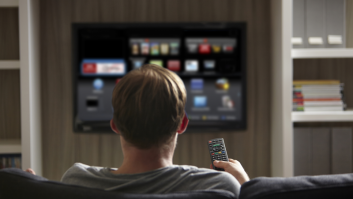MediaTech 360 has seen a discussion about ad technology and the next frontier for digital advertising.
When asked how technology is creating inventory for broadcasters, Justin Gupta, Google’s head of UK broadcast and entertainment, global partnerships, said that he sees HBBTV bringing a degree of addressability to linear channels.
In radio, he observed the same shift, with digital monetisation being driven by the emergence of smart speakers and digitally enabled channels.
“Traditionally, with TV and radio, everything has been traded in bulk,” said Gupta. “This has got to change.”
Jonathan Acton, head of creative delivery at Clear Channel, sees the ad tech industry moving at a good pace, and believes there are some exciting opportunities: “It’s a question of how do we engage households with content through smart speakers for example and continue that communication. Out-of-home and radio ads are key in progressing the user journey.
“Budgets are going down however and creators are expected to do more with less. Advertising needs to be more of an application and fit into people’s lives.”
Duncan Snowden, head of platforms and technology, Gravity Road, said that the main challenge is the single source view of reaching people through mediums and being able to properly measure it.
“Within the culture of the advertising industry, there’s a perception that there’s fewer cross platforms ideas and campaigns taking place these days,” he said. “The capability that the likes of Facebook and Google have provided lets people move further along the consumer journey.”
Gupta added that fragmented media is something that needs to change, while simplifying distribution also needs to happen on the advertising side. “We’re looking to enable omni-channel campaigns to allow people to buy across all media in one-place programmatically rather than trading in bulk,” he revealed.
Snowden went on to highlight some of the more creative opportunities of ad tech, and mentioned that while augmented reality (AR) can help drive engagement, it is currently undercapitalised.
He also mentioned that while personalisation is crucial, it puts a lot of pressure on talent in the creative industry in terms of keeping them motivated: “The advertising industry needs to be more attractive to young people and work on its ageism,” he said.
Gupta added that broadcasters have been sitting on a huge amount of data throughout the years: “With digital distribution they can get data points they’ve never had before,” he said. “There’s going to be opportunities with agencies from adjacent industries, for example Amazon might find a way to integrate data into the advertising tech landscape.”







